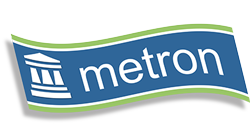So far we’ve considered areas where a new capacity management (CM) product or better CM services can save you money, building the benefit side of a return on investment calculation. It costs you money to make a change however so let’s take a look at the cost side of the equation.
In my first blog I outlined areas of cost to consider:
Likewise there will be on-going cost for support from these other teams. As we had ‘soft savings’ these are ‘soft costs’. The business is paying these peoples’ wages already but if they weren’t supporting the CM team, they could potentially be adding value to the business in other ways. Typically this is a minor element of overall costs.
In my final blog on Wednesday I’ll be taking a look at return on investment rather than purely cost justification.
In my first blog I outlined areas of cost to consider:
· Costs of CM software, including on-going maintenance
· CM team resources needed to use that software
· Initial training for the new software
· Implementation and on-going services required
· Other personnel resources that are needed to help with the implementation and in-going usage of the software
Let’s now look at these in more detail.If you’re looking to buy a software product to improve your CM, there will be software costs and on-going maintenance. If you’re doing a Return on Investment (ROI) over several years, remember to factor in increases in annual maintenance costs over time and any further purchases you might need to make, for example upgrades or further roll out of the capacity software.
It’s also worth bearing in mind that your ROI will look more realistic to the CIO if you remember that although software costs are incurred on day one, the benefits and savings identified in the previous three blogs take time before they are enjoyed. Offset the savings to allow time for implementation, training and usage of the new software and processes before the benefits begin to pay dividends. Likewise be realistic about factoring in when training and implementation services will take place. Unless you are paying for everything up front, there could be costs that can be deferred.
Resources from other teams that are necessary to implement new CM software or processes should not be forgotten. In my early days, the Capacity Manager would install Athene himself. Nowadays, and for very good reason, we need the support of sys admins, the security team, the network team and more before a CM software solution can be put in place. These initial costs need to be included. Likewise there will be on-going cost for support from these other teams. As we had ‘soft savings’ these are ‘soft costs’. The business is paying these peoples’ wages already but if they weren’t supporting the CM team, they could potentially be adding value to the business in other ways. Typically this is a minor element of overall costs.
You must also allow for staff costs and any physical resources such as servers and databases to support your CM software. If you have a CM team of four before and after purchase, you could consider staff costs to remain the same but remember the ‘soft savings’ on staff.
Those same four people will be able to do a lot more thanks to the new software and/or processes. A value could and should be put against this increased efficiency.
For hardware resources to support the CM team, again remember the cost of upgrades, additional hardware and price increases over time.In my final blog on Wednesday I’ll be taking a look at return on investment rather than purely cost justification.
Andrew Smith
Chief Sales & Marketing Officer